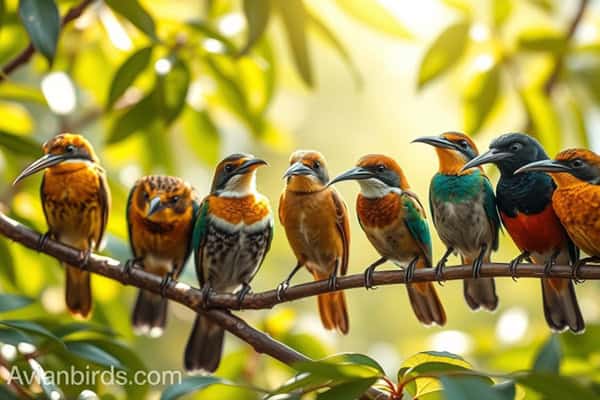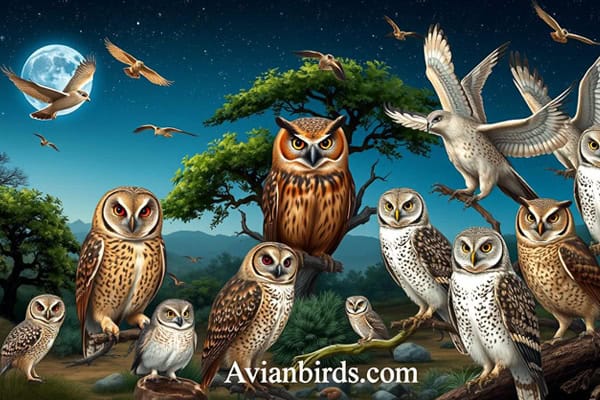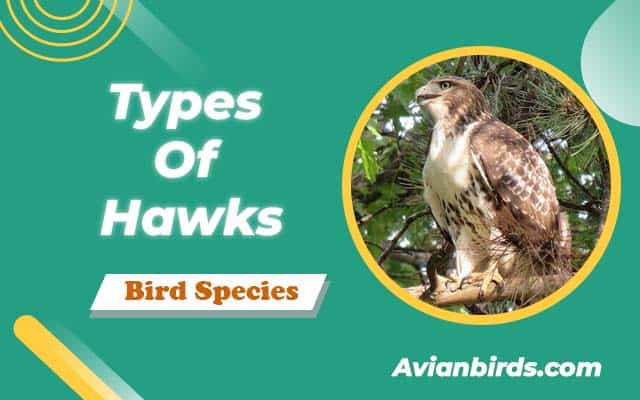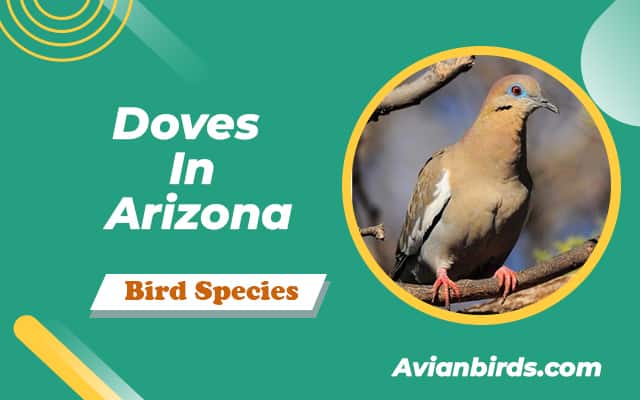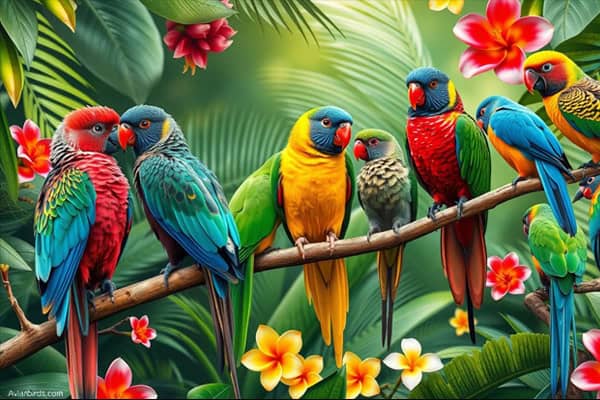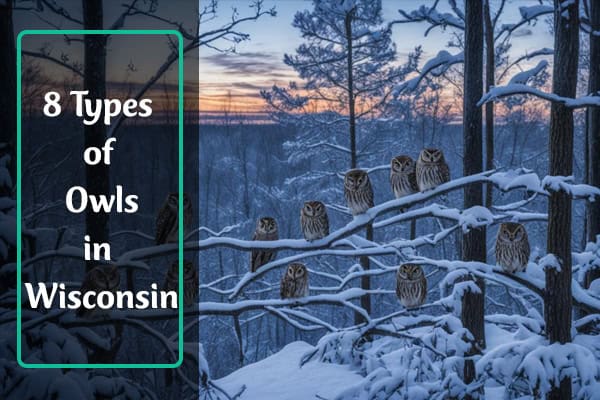7 Types of Small Birds with Long Beaks (With Pictures)
Did you know over 400 Small birds have long beaks? Each one is perfect for their special way of eating. This shows how amazing birds have evolved, especially hummingbirds and kingfishers.
We’re going to look at some small birds with long beaks. These beaks help them eat in special ways. From the Sword-billed Hummingbird to the Cerulean Kingfisher, we’ll see their cool features and habits.
These birds live in many places around the world. They use their long beaks to eat nectar, insects, and soft foods. This guide will show you these amazing birds.
Unique Features of Small Birds with Long Beaks
Small birds with long beaks have amazing morphology that helps them survive. Their long, thin bills let them reach deep into flowers for nectar or get insects from small spaces.
Each species has its own special beak shape and size. Some have wide, flat beaks for seeds, while others have narrow, pointed beaks for getting into flowers.
Learning about their feeding behavior shows how they help with pollination and controlling pests. Birds like hummingbirds have special ways to get food from hard-to-reach places. They can hover and get nectar with great precision.
In short, the special traits of small birds with long beaks are key to how they eat and survive. These traits show how diverse and strong birds are, and how connected we all are in nature.
1. Sword-billed Hummingbird
- Scientific Name: Ensifera ensifera
- Size: 15–20 cm (5.9–7.9 in)
- Weight: 10–12 g (0.35–0.42 oz)
- Lifespan: Approximately 5 years in the wild
- Diet: Nectar from long-tubed flowers, which it accesses with its uniquely long bill, often longer than its body.
The Sword-billed Hummingbird is a unique bird with special traits. It lives in parts of South America. Its features help us learn about its home and how it eats.
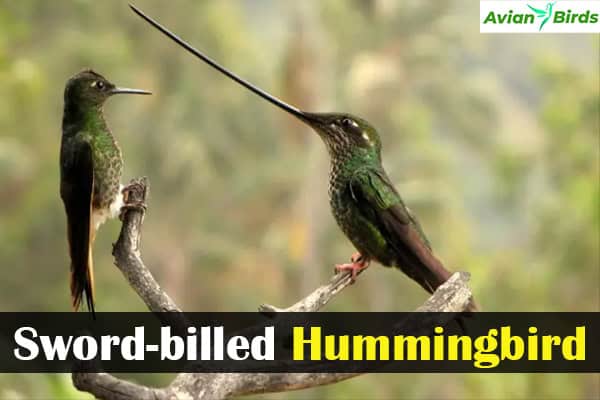
Description and Habitat
This bird has a very long, thin beak, longer than its body. Its beak lets it get nectar from deep flowers. It lives in high mountains in northwestern South America. The area is full of green plants and colorful flowers.
Males of this bird are very colorful. They stand out in their beautiful home.
Feeding Habits and Diet
The Sword-billed Hummingbird eats in a special way. Its long beak lets it get nectar from deep flowers. This is food that other birds can’t reach.
These birds also eat insects and spiders. These foods give them the proteins they need. Their varied diet helps them live in the wild.
2. Cerulean Kingfisher
- Scientific Name: Alcedo coerulescens
- Size: 16–18 cm (6.3–7.1 in)
- Weight: 30–45 g (1.1–1.6 oz)
- Lifespan: 5–7 years
- Diet: Small fish, crustaceans, and aquatic invertebrates.
The Cerulean Kingfisher is a small bird with bright blue feathers. It has a unique look and way of life. Learning about its looks and habits helps us enjoy it more.
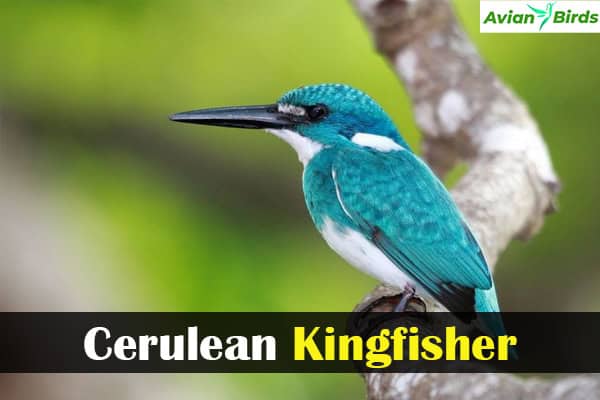
Identification and Appearance
This bird is easy to spot because of its bright blue feathers. It also has white patches on its throat and belly. Males and females look alike, but females have a greenish tint.
Preferred Habitat and Distribution
This bird lives near rivers, streams, and mangroves, especially in Indonesia. It loves the water and stays in the same places. It eats fish and crustaceans, making the most of its home.
3. Slender-billed Scimitar Babbler
- Scientific Name: Pomatorhinus superciliosus
- Size: 24–26 cm (9.4–10.2 in)
- Weight: 50–60 g (1.8–2.1 oz)
- Lifespan: Approximately 5–7 years
- Diet: Insects, larvae, and other small invertebrates
The Slender-billed Scimitar Babbler is a bird that catches the eye with its unique look and interesting ways. By learning about its looks and what it eats, we can better understand this amazing bird.
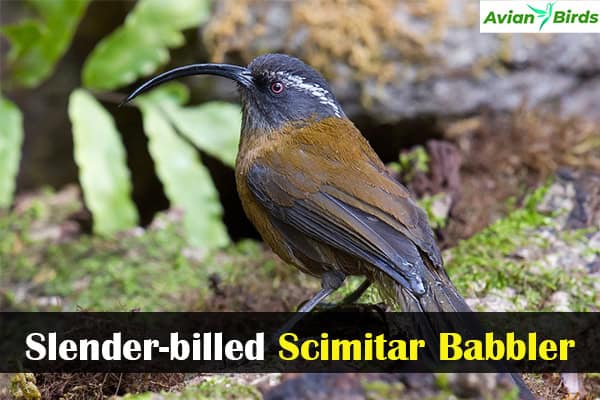
Physical Characteristics
This bird has orange-brown feathers that help it blend in with its forest home. It has a special bill that curves down, like a scimitar. This bill shape helps it find food in tight spots.
Its thin body lets it reach into small spaces to look for food. This makes it great at finding what it needs in the forest.
Dietary Preferences
In the forests of southeast Asia, the Slender-billed Scimitar Babbler eats a wide variety of foods. It likes insects, spiders, and berries. It changes what it eats based on what’s available.
This way, it can survive in its environment and make the most of what the forest offers.
4. Little Spiderhunter
- Scientific Name: Arachnothera longirostris
- Size: 14–15 cm (5.5–5.9 in)
- Weight: 10–12 g (0.35–0.42 oz)
- Lifespan: Approximately 5 years
- Diet: Nectar, insects, and spiders.
The Little Spiderhunter is a small bird with a long, down-curved beak. This beak helps it live in many places, like forests, mangroves, and gardens in South and Southeast Asia. It moves easily through thick leaves, making birdwatchers happy.
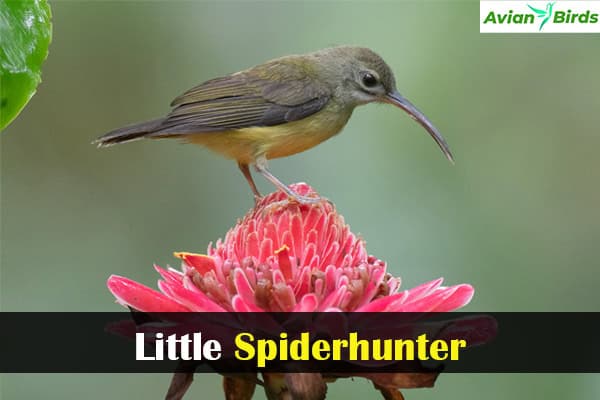
This bird eats spiders and insects. Its long beak is great for getting food from tight spots. It shows how this small bird uses its special beak to live well in its world.
| Characteristic | Detail |
|---|---|
| Size | Medium-sized, approximately 5 to 6 inches in length |
| Beak Type | Long and down-curved, ideal for extracting food |
| Habitat | Forests, mangroves, and gardens |
| Diet | Mainly spiders and insects |
| Regions Found | South and Southeast Asia |
5. Eastern Spinebill
- Scientific Name: Acanthorhynchus tenuirostris
- Size: 14–16 cm (5.5–6.3 in)
- Weight: 10–15 g (0.35–0.53 oz)
- Lifespan: Approximately 5 years
- Diet: Nectar from flowers, insects, and spiders.
The Eastern Spinebill is a bird that catches our eye with its beauty and special ways of eating. It stands out with its looks and bright colors in Australia’s bird world. Seeing this small bird in nature shows us the beauty of the world.

Appearance and Coloration
The Eastern Spinebill is easy to spot because of its bright colors. It has blacks, whites, and bright reddish-oranges that look amazing together. Its long, thin beak is perfect for drinking nectar from flowers, which it needs to eat.
This special beak and its colors make it a joy to watch as it moves among flowers. The Eastern Spinebill stays in its favorite places all year. This lets us see its beauty many times.
| Feature | Description |
|---|---|
| Coloration | Blacks, whites, and reddish-oranges |
| Beak Type | Long, slender, down-curved |
| Feeding Method | Siphoning nectar from flowers |
| Habitat | Preferred habitats throughout the year |
6. Mountain Velvetbreast
- Scientific Name: Lamprolia, also known as Lamprolia victoriae
- Size: 15–18 cm (5.9–7.1 in)
- Weight: 12–15 g (0.42–0.53 oz)
- Lifespan: Approximately 5 years
- Diet: Nectar from flowers, insects, and spiders.
The Mountain Velvetbreast is a beautiful hummingbird that catches the eye of bird lovers and nature fans. It lives in the high mountains of northwestern South America. Its unique look makes it stand out among other small birds with long beaks.
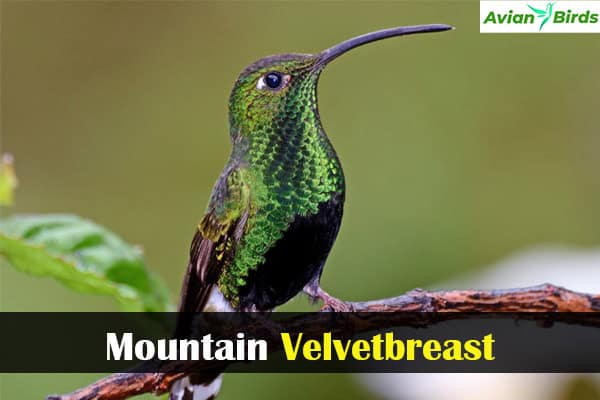
We can learn about its home and where it lives to see how it fits into nature. This lets us understand where this lovely bird finds its food and shelter.
Habitat and Range
This bird loves the high mountains, where it flits among the flowers. It’s great at living in tough places, which helps it survive in the mountains. It lives in several countries, like Colombia and Ecuador.
| Country | Elevation (meters) | Preferred Habitat |
|---|---|---|
| Colombia | 2,000 – 3,500 | Montane forests |
| Ecuador | 2,000 – 3,500 | Cloud forests |
The Mountain Velvetbreast eats nectar but also eats insects sometimes. Knowing where it lives and what it eats shows why we need to protect its home. This helps us save the places where it lives and thrives.
7. Greater Double-collared Sunbird
- Scientific Name: Cinnyris afer
- Size: 14–16 cm (5.5–6.3 in)
- Weight: 10–15 g (0.35–0.53 oz)
- Lifespan: Approximately 5 years
- Diet: Nectar from flowers, insects, and spiders.
The Greater Double-collared Sunbird is a stunning bird with bright colors. Males have a shiny green body and a bright red chest band. This makes them very popular with bird lovers. They live in many places in southern Africa, showing how well they adapt.

These birds love to eat nectar. Their long beaks help them get nectar from many flowers. They also eat insects, which gives them a balanced diet. This shows how they can find food in their home.
| Feature | Description |
|---|---|
| Plumage | Vibrant iridescent green with a red chest band (males) |
| Habitat | Found in various environments across southern Africa |
| Primary Diet | Nectar and insects |
| Adaptability | Utilizes different food sources available in its habitat |
Small Birds with Long Beaks: A Closer Look
We find small birds with long beaks truly fascinating. They have special ways of living and interacting with their world. These birds play a big role in keeping ecosystems healthy.
Many of these birds help pollinate plants. This is key for the health of plant life. Their long beaks let them get to nectar in flowers that others can’t reach.
These birds show us many different ways of eating and moving. They hover and move through thick plants with ease. Seeing them in the wild helps us understand how important they are.
We need to work hard to protect these birds and their homes. By studying them, we see how important it is to save their habitats. This way, these special birds can keep helping our ecosystems.
Conservation and Habitat Preservation
Small birds with long beaks are fascinating and crucial to our ecosystems. They face many threats that put their survival at risk. It’s important to understand and tackle these issues for bird conservation and keeping their homes safe.
Threats to Small Birds
The survival of these birds depends on their living spaces. There are big threats to their survival, including:
- Habitat Destruction: Things like cities, farms, and cutting down trees destroy their homes. This makes it hard for them to find food, mate, and raise their young.
- Climate Change: Changes in the weather affect where they can find food and places to nest. These birds are changing their migration patterns to adapt to the new conditions.
- Pollution: Harmful substances in our world can hurt their health and how many babies they have. Things like pesticides, plastics, and heavy metals are big risks, causing illness and fewer babies.
We all need to work together to protect these birds. Keeping their homes safe, using conservation plans, and spreading the word can help. We must do more than just look at them; we need to act to save them for the future.
Check Our Previous Articles:
| Birds That Lay Blue Eggs |
| Birds With Red Beaks |
| Birds in South Carolina |
| Green Birds in Sarasota Florida |
| Types of Conures |
Conclusion
Small birds with long beaks are fascinating and play a big role in our world. They live in many places and help keep our ecosystems healthy. By studying their behaviors, we learn how they help with pollination and controlling pests.
As bird watchers, we love to watch and learn from these birds. But, they face many challenges today. We must work to protect their homes and help them survive. Supporting conservation efforts is key to making a difference.
We all can help protect these amazing birds and their homes. Let’s keep enjoying their beauty and work to save them. The future of these birds depends on us. We must act to keep them flying in our skies.

